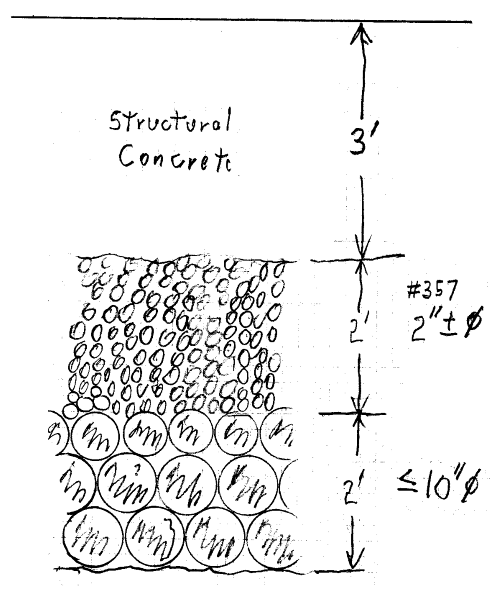bootlegend
Structural
I designed a large mat foundation for a bin in a quarry that was supposed to be founded on solid bedrock. After blasting out the area the bedrock is about 4 feet too low. The customer is asking what fill I recommend to bring their site back to correct elevation. I only need 5000 psf. Pad is approximately 60' x 30 x 3' thick. Bedrock below is sound. I'm thinking something along the lines of 10" minus crushed limestone for the first two feet, compacted in 1' lifts, and then a #357 stone mixture for the top two feet, compacted in 8" lifts should be good enough. Does this sound reasonable?


![[idea] [idea] [idea]](/data/assets/smilies/idea.gif)
![[r2d2] [r2d2] [r2d2]](/data/assets/smilies/r2d2.gif)